calsfoundation@cals.org
Ouachita County
| Region: | Southwest |
| County Seat: | Camden |
| Established: | November 29, 1842 |
| Parent County: | Union |
| Population: | 22,650 (2020 Census) |
| Area: | 732.72 square miles (2020 Census) |
| Historical Population as per the U.S. Census: | |||||||||
|
1810 |
1820 |
1830 |
1840 |
1850 |
1860 |
1870 |
1880 |
1890 |
1900 |
|
– |
– |
– |
– |
9,591 |
12,936 |
12,975 |
11,758 |
17,033 |
20,892 |
|
1910 |
1920 |
1930 |
1940 |
1950 |
1960 |
1970 |
1980 |
1990 |
2000 |
|
21,774 |
20,636 |
29,890 |
31,151 |
33,051 |
31,641 |
30,896 |
30,541 |
30,574 |
28,790 |
|
2010 |
2020 |
|
|
|
|
|
|
|
|
|
26,120 |
22,650 |
|
|
|
|
|
|
|
|
| Population Characteristics as per the 2020 U.S. Census: | ||
| White |
12,194 |
53.8% |
| African American |
8,899 |
39.3% |
| American Indian |
71 |
0.3% |
| Asian |
126 |
0.6% |
| Native Hawaiian or Other Pacific Islander |
3 |
0.0% |
| Some Other Race |
225 |
1.0% |
| Two or More Races |
1,132 |
5.0% |
| Hispanic Origin (may be of any race) |
516 |
2.3% |
| Population Density |
30.9 people per square mile |
|
| Median Household Income (2019) |
$35,425 |
|
| Per Capita Income (2015–2019) |
$21,562 |
|
| Percent of Population below Poverty Line (2019) |
23.2% |
|
Ouachita County, the forty-fifth county in Arkansas, was created in 1842 from land taken from the northwestern parts of Union County. It was named after the Ouachita River on which the county seat of Camden, incorporated in 1844, sits on a bluff at a horseshoe curve of the river. Ouachita is the French spelling of a Native American word that is pronounced “Washita” and supposedly denoted good hunting or a river of many fish. The land in the county was covered with vast forests of pines and drained by bayous and sloughs running to the Ouachita River. The Ouachita River forms part of the eastern boundary of the county, while Clark, Dallas, Calhoun, Union, Columbia, and Nevada counties border the remaining areas.
Louisiana Purchase through Early Statehood
Soon after the Louisiana Purchase in 1803, George Hunter and William Dunbar were sent to explore the Ouachita River. As they passed through present-day Ouachita County in 1804, they mentioned an old trading post called Ecore à Fabri but found no settlement there. In 1782, Don Juan Filhiol, a Frenchman who represented the Spanish who then controlled the Louisiana Territory, established a military post on that site, which had long been used as a rendezvous point on the river. In Filhiol’s time, the area was inhabited by the remnants of several Native American tribes and a number of itinerant hunters, trappers, and traders, most of French ancestry. Filhiol hoped to attract settlers to the remote upper Ouachita, but several years later he moved his headquarters downriver to present-day Monroe, Louisiana. When Arkansas became a territory, things began to change. Among the first permanent settlers were the Tate and Nunn families. The first steamboat reached the now-revived post of Ecore à Fabri in the 1820s. These early steamboats played an important role in the commercial growth of what would become Ouachita County.
In the late 1820s and early 1830s, the population of the area consisted of approximately 150 Choctaw, along with white settlers and slaves. As more white settlers came to the area, the French left, returning to New Orleans or moving farther west. A post office was established at Ecore à Fabri by 1830, the first in what was then Union County. Statehood in 1836 provided an incentive for many farmers, merchants, craftsmen, and professional people to come to the area. When the new county of Ouachita was formed in 1842, Ecore à Fabri (Fabre) remained as the county seat but soon was renamed Camden. By 1846, the county boasted four more post offices: Buffalo, Freeo, Foster’s, and Woodlawn. By 1844, Camden was a substantial town with planned streets, lawyers and doctors, a courthouse, schools, and churches. Records indicate that Dr. James H. Ponder was the first physician in the county, and the first newspaper, the Ouachita Herald, was published in 1845 with Joshua Ruth as editor. According to the 1850 census, Ouachita County rivaled Pulaski in population. The county continued to thrive through the 1850s.
Civil War through Reconstruction
The institution of slavery was an important part of the economy of the county before the Civil War. In 1860, the white population stood at 8,457 while the enslaved population was 4,478 with a single free person of color in the county.
The county supplied several companies of troops to the Confederate army, and several major fortifications were constructed along the Ouachita River. These forts include Forts Lookout and Sutherland in Camden, the Camden Water Battery, and a fortification at Tate’s Bluff.
The county played a pivotal role in the Arkansas portion of the 1864 Red River Campaign. In what was known as the Camden Expedition, Major General Frederick Steele led Federal forces from Little Rock (Pulaski County) and Fort Smith (Sebastian County) toward Shreveport, Louisiana in an effort to capture that city and eventually invade Texas. Another Federal army and gunboat fleet moved up the Red River in conjunction with Steele.
Plagued with supply problems from the outset of the expedition, Steele feinted toward the Confederate capital of Washington (Hempstead County) at Prairie D’Ane before capturing Camden on April 16 and using the Confederate-built defenses to hold the city.
Running out of supplies, Steele sent foraging parties into the countryside. A group of troops harvested corn west of Camden and were returning when attacked by Confederate forces at what would become known as the Engagement at Poison Spring on April 18. The killing continued after the battle when both white and Black Union soldiers died at the hands of Confederate soldiers. The battle is commemorated at Poison Spring Battleground State Park.
After a second wagon train was destroyed at the Action at Marks’ Mills on April 25, Steele realized that the situation was untenable. Under the cover of darkness, the Federals evacuated Camden on the night of April 26 and retreated toward Little Rock. Confederate forces followed and engaged the Federals at the Engagement at Jenkins’ Ferry. Camden continued to serve as a Confederate stronghold for the remainder of the war.
Post-Reconstruction through the Gilded Age
The first high school building was erected in 1871. The steamboats coming in and out of the Port of Camden before the war returned carrying food, timber, cotton, and people to Baton Rouge, Louisiana, and New Orleans. In the 1880s, the railroad came to Ouachita County, including the Reader Railroad, also known as the Possum Trot Line, which was constructed around 1887 near what is now Highway 24. The coming of the railroad also resulted in the creation of new towns and communities. The town of Chidester, located in the northwest part of the county, was laid out by the railroad companies in 1880 and named after John T. Chidester. The Cotton Belt Railroad’s decision to bypass Magnolia (Columbia County) during the construction of the rails to Texarkana (Miller County) created the community of Stephens in 1881; it incorporated as a town in 1889. Bearden was incorporated in 1892 and was named to honor the Ouachita County judge at the time. Bearden was a community of people who owned and worked the timberlands of the county.
Multiple incidents of racial violence occurred in the county in the late nineteenth and early twentieth centuries. Hill Larkin lost his life at the hands of a lynch mob after allegedly killing a deputy in 1890. Bob Jordan was killed two years later after allegedly insulting a white woman. Three men died at the hands of a mob in Bearden in 1893 after allegedly attacking and robbing a white man. Other lynchings took place in 1898, 1902, and 1925.
Early Twentieth Century
After Reconstruction, the paper industry came to southern Arkansas to take advantage of the timber and the access to the railroad. In 1907, Garland Anthony and his partners laid the foundation of today’s Anthony Timberlands. The company operated mills and acquired land in Ouachita County and throughout southern Arkansas. In 1928, the first kraft, pulp, and paper mill was built in Camden by International Paper Company. Camden was a prime site because kraft paper is made from the loblolly pine tree, which grew abundantly in Ouachita County and throughout the South. The Ouachita River provided water for the plant and transportation for the products. International Paper provided jobs for numerous families in the county until the mill closed in 2001.
The discovery of oil in southern Arkansas in the early twentieth century had an impact on the growth of the county. Wells drilled near Lester in 1909 did not produce enough oil to be commercially viable, but additional wells drilled at Ogemaw did produce sizeable quantities. Louann quickly increased in population in the 1920s when oil was found in the town, and Miller’s Bluff continues to serve as a port on the Ouachita River for the shipment of oil.
In 1926, Benjamin Tyndle Fooks bought a small soft drink bottling plant in Camden for $4,000 and soon created the nationally distributed Grapette soda. Also in 1926, Samuel Jacob “Jack” Carnes founded Camark Pottery, which shipped art pottery across the United States and the world until the company dissolved in 1984. Harvey’s Grocery opened in the 1940, three miles west of Camden on Highway 24. It became a popular local meeting place on Saturdays. Politicians regularly visited as well. Dale Bumpers held a rally there in 1981 that attracted 2,000 people and congested the highway. Bill Clinton was a popular visitor while holding state offices and was later know to visit if in the area.
The county’s first two courthouses were destroyed by fire, while the third was almost destroyed by a tornado on December 13, 1931. The courthouse was completely rebuilt.
World War II through the Modern Era
The Shumaker Naval Ammunition Depot was built in Ouachita and Camden counties in late 1944 and early 1945. More than 24,000 construction workers were involved in the creation of the ammunition depot. When completed, it covered approximately 68,200 acres, including an eight-mile-long rocket testing range. Following the end of World War II, the depot maintained a small staff on standby status, until the facility was determined by the U.S. Navy to be surplus in 1959.
The Camden Army Airfield operated east of the city from 1942 until 1944. A B-26 bomber crashed near Frenchport in January 1944, killing the entire crew. It was not operating at the airfield but was on a cross-country flight when it went down.
The present public library was constructed in 2014, replacing the 1954 Ingham library that burned in 2011.
With the closure of the Shumaker Depot, some residents in the area decided to work to transform the site. The city of East Camden was incorporated in 1965 and includes residential areas constructed while the depot was in operation. Highland Industrial Park was then built on part of the property, providing jobs for workers from Camden and other nearby communities. Billed as the largest industrial park in five states, Highland Industrial Park features manufacturing and warehousing and is also home to Southern Arkansas University Tech.
The county is still considered rural in the twenty-first century, with no metropolitan areas. Almost eighty-four percent of the land is covered with forest, while the remainder is mostly planted with row crops, including cotton.
Famous Residents
Three Arkansas governors came from Ouachita County: George Washington Hays, Benjamin Travis Laney Jr., and David Hampton Pryor. Pryor was the son of Susan Newton Pryor, the first woman in Arkansas to run for county office. David Pryor went on to serve in the U.S. House of Representatives and the U.S. Senate. Tommy Tuberville, a U.S. senator representing Alabama and a former college football coach, was born and raised in Camden.
One famous resident was the subject of an unsolved mystery. On March 2, 1957, Maud Crawford, Camden’s first woman attorney and known as an expert in title and abstract, disappeared from her home without a trace. Because she was a former law partner of U.S. Senator John L. McClellan, who at the time was conducting a high-profile investigation into Mafia activity, her disappearance attracted national attention.
Historic Sites
The McCollum-Chidester House, located in Camden, was built in 1847 by the McCollum family and sold to John T. Chidester in 1862 for $10,000 in gold. Chidester was unofficially called Colonel Chidester and assisted the South during the Civil War by letting Confederates censor mail carried by his stagecoach line. Generals from both the North and South headquartered at the house at different times during the war. Union soldiers occupied the house during the Engagement at Poison Spring just west of Camden in April 1864. After the Civil War, Chidester resumed his stagecoach business, carrying mail and passengers. His house became the central station of the Butterfield Overland Mail Company. Other buildings in the county listed on the National Register of Historic Places include Two Bayou Methodist Church and St. John’s Episcopal Church.
For additional information:
Camden School Writing Project. Patterns—A Social History of Camden. Little Rock: August House, 1986.
Ouachita County Historical Society. www.ouachitacountyhistoricalsociety.org (accessed April 12, 2022).
Ouachita County Historical Quarterly. Camden, AR: Ouachita County Historical Society (1969–).
Researchin’ Ouachita-Calhoun Counties, Ar. Camden, AR: Ouachita-Calhoun Genealogical Society (1981–).
Debbie Fenwick Ponder
Camden, Arkansas
Revised 2022, David Sesser, Southeastern Louisiana University
 Buena Vista (Ouachita County)
Buena Vista (Ouachita County) Camden Army Air Field
Camden Army Air Field Camden Daffodil Festival
Camden Daffodil Festival Camden Expedition
Camden Expedition Camden, Skirmish at (April 15, 1864)
Camden, Skirmish at (April 15, 1864) East Camden (Ouachita County)
East Camden (Ouachita County) Frenchport (Ouachita County)
Frenchport (Ouachita County) Homer
Homer John, "Little Willie"
John, "Little Willie" Louann (Ouachita County)
Louann (Ouachita County) Oakland Cemetery
Oakland Cemetery Tate’s Bluff Fortification
Tate’s Bluff Fortification USS Ouachita County (LST-1071)
USS Ouachita County (LST-1071) White Oak Lake State Park
White Oak Lake State Park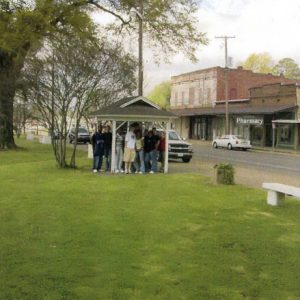 Bearden Main Street
Bearden Main Street  Bearden Railroad Depot
Bearden Railroad Depot  Entering Bragg City
Entering Bragg City  Bragg Lake
Bragg Lake  Dee Brown
Dee Brown 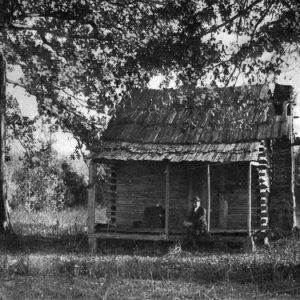 Camden Log Cabin
Camden Log Cabin 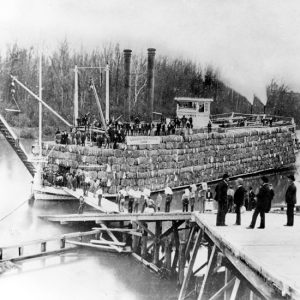 City of Camden Steamboat
City of Camden Steamboat  Confederate Women Monument
Confederate Women Monument  "Fever," Performed by "Little Willie" John
"Fever," Performed by "Little Willie" John  Barbara Hendricks
Barbara Hendricks 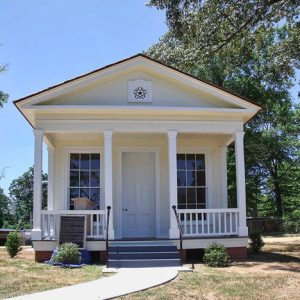 Leake-Ingham Library
Leake-Ingham Library  McCollum-Chidester House
McCollum-Chidester House 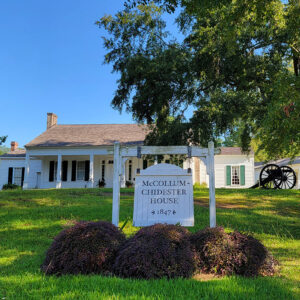 McCollum-Chidester House Museum
McCollum-Chidester House Museum 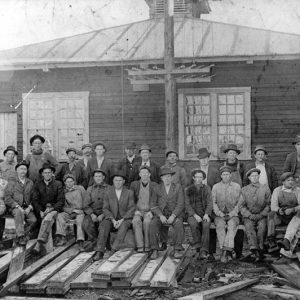 Millville Sawmill
Millville Sawmill 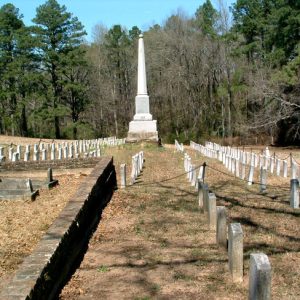 Oakland Cemetery
Oakland Cemetery 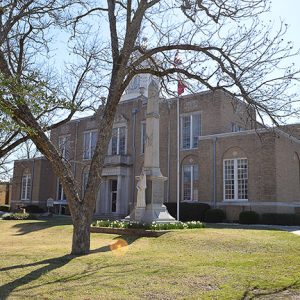 Ouachita County Courthouse
Ouachita County Courthouse 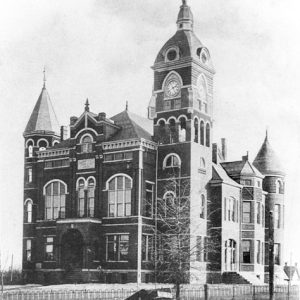 Ouachita County Courthouse
Ouachita County Courthouse 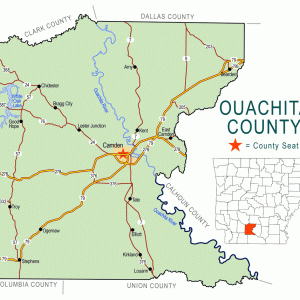 Ouachita County Map
Ouachita County Map 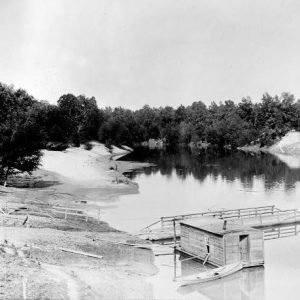 Ouachita River Ferry
Ouachita River Ferry  Poison Spring Battleground State Park
Poison Spring Battleground State Park  Poison Spring Fire Tower
Poison Spring Fire Tower  Engagement at Poison Spring Marker
Engagement at Poison Spring Marker 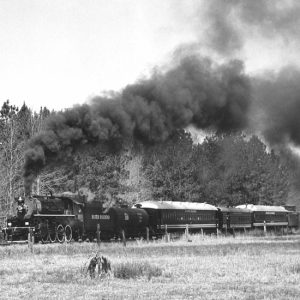 Reader Railroad
Reader Railroad 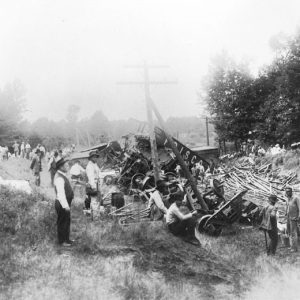 Stephens Train Wreck
Stephens Train Wreck 




Comments
No comments on this entry yet.